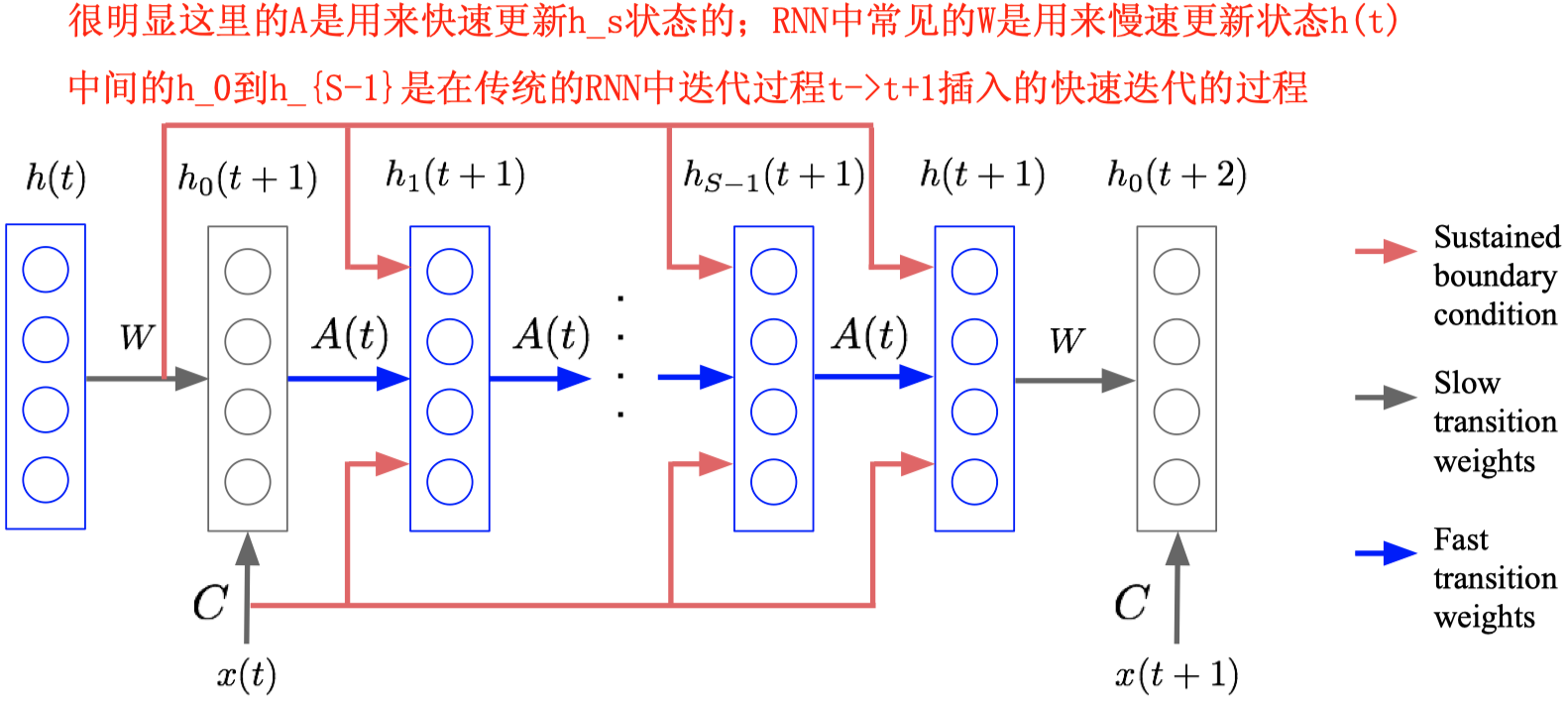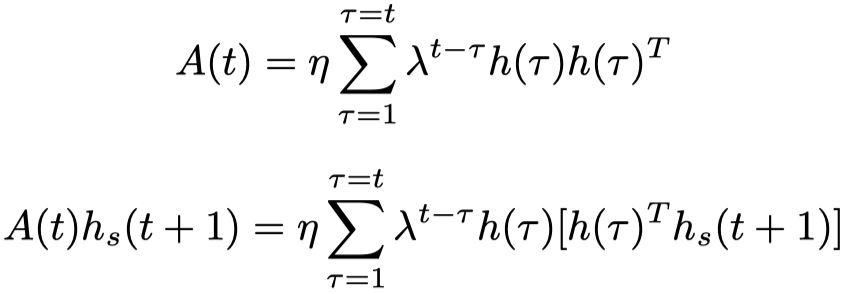Fast-weights-RNN
Using Fast Weights to Attend to the Recent Past
NIPS 2016
作者将fast weights引入到RNN中实现了更好的效果。本质上是在RNN的t时刻到t+1时刻中间,插入了一段新的RNN结构,每个step计算之前的隐藏状态和当前隐藏状态的关系权重,不断累加,最后达到比较好的效果。
这里需要先介绍下fast weights。
在1987年的时候,有一篇paper《Using Fast Weights to Deblur Old Memories》,提出了下面的说法:
Despite the emerging biological evidence that changes in synaptic efficacy at a single synapse occur at many different time-scales (Kupferman, 1979; Hartzell, 1981), there have been relatively few attempts to investigate the computational advantages of giving each connection several different weights that change at different speeds.
意思是说如果把一个weight的更新看做是神经元的一次神经活动,那么weight的更新也应该是有不同time scalse的。
那么如果模仿这个过程,除了一般的weight外,还可以尝试加入其它time scale的weight,也就是fast weight,fast weight用来模拟短时的记忆。
- Slow weight: The slow weights are like the weights normally used in connectionist networks-they change slowly and they hold all the long-term knowledge of the network.
- Fast weight: The fast weights change more rapidly and they continually regress towards zero so that their magnitude is determined solely by their recent past.
来看一下作者具体怎么样把fast weight引入到RNN中:

首先定义一个fast weight matrix:

然后在RNN的\(t\) step到\(t+1\) step中间,插入新的多个step:

从这里可以看出来,\(A\)被用来快速更新状态。
由于实际中,sequence的time step数量是要比定义的hidden state vector的维度要小的,所以最后计算出来的A实际上远远不是一个满秩的矩阵。为了计算方便,作者假定对于不同sequence,\(A\)的初始值是0,那么有:

通过简单计算之前时刻隐藏状态和最近隐藏状态的点积,作为权重(也是attention),然后加上以前的隐藏状态,计算很快速。
作者还使用了layer normalization来防止两个向量的点积可能出现的数值消失或者爆炸的问题。